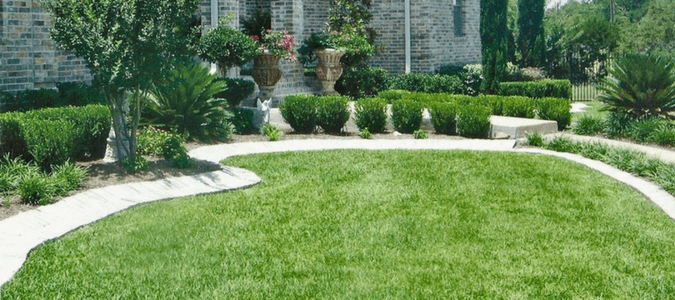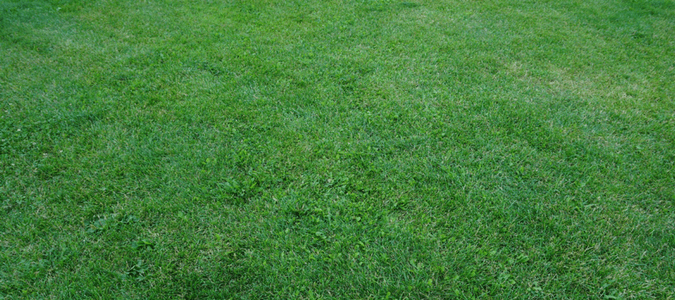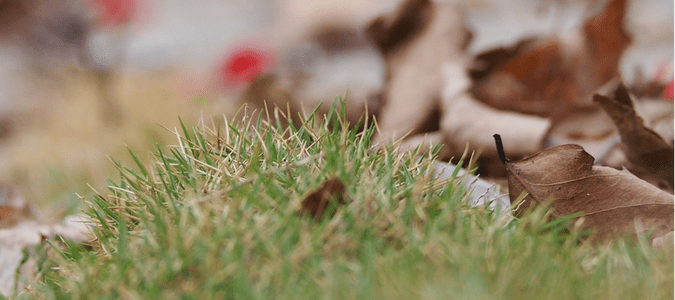
When you spend a lot of time with the goal of having a green manicured yard, the last thing you want to see is signs of damage. You water, mow, edge and maybe even fertilize in the hopes of seeing a lush carpet. What do you do if you suspect you have yard fungus? How do you know if the damage you are seeing is a type of yard fungus or something else entirely?
St. Augustine is a popular grass for homeowners because it is shade, heat, salt and drought tolerant. When maintained properly, this variety of grass also handles normal human and animal traffic well. However, there a couple of types of lawn fungus that are more prevalent when you have St. Augustine grass. These lawn fungus types also like other warm-season grasses, such as Bermuda and Zoysia.
In this post, we will tell you what you need to know about the different types of lawn fungus, how to identify what’s attacking your grass and how to treat these conditions so that you can go back to having a beautiful, healthy emerald green yard.

Lawn Fungus Types
There are a variety of lawn fungus types that can affect your yard. Brown patch (also sometimes known as large patch) and take-all root rot (also referred to as take-all patch) are the two most common lawn diseases that we see which can damage turf in southern parts of the United States. It’s important to know the difference between the two types to determine the best way to address your problem.
Brown Patch/Large Patch
Brown patch affects all types of grass, but is most common with St. Augustine. Our lawn experts find that the Raleigh variety seems to be the most susceptible to the disease. As the name implies, the damage from this fungus manifests as browned patches in your yard with circle-shaped tan or brown spots on the individual blades of grass, as well as rotted sheaths near the soil. This lawn condition typically forms in a circular shape, but can also affect large areas of your yard. In more extreme cases, damage does not occur in a circular pattern but is more widespread across your lawn. You may even see completely bare spots where the fungus has attacked your grass and left dirt behind if the condition is left untreated in warm and humid conditions.
Since large patch prefers warm and humid climates, warm-season grasses such as Bermuda and Zoysia are also vulnerable to this type of lawn fungus.
Take-all Root Rot/Take-all Patch
Take-all root rot is easily mistaken for other diseases and even bugs that can damage our well-manicured lawns. One of the ways to tell that you have root rot is to inspect your grass from the area where the plant meets the dirt. If the roots are short, black or rotten and stolons come out of the ground easily, you may have take-all root rot.

Will Lawn Fungus Go Away on Its Own?
Unfortunately, lawn fungus will not disappear if left untreated. The most effective way to manage yard fungus is to use a fungicide and practice good turf management. Fungicides are designed to inhibit energy production at the cellular level and to harm cell membranes, which eventually kills the fungi that is attacking your grass. As with any type of pesticide, homeowners should do their research to identify the type of fungicide needed to manage a particular type of lawn fungus and make sure solutions are applied carefully and according to manufacturer instructions. Make sure to avoid overusing fungicide to prevent additional damage to your grass. If you are unsure about how to correctly apply treatments, contact a trusted pest professional.
Yard Fungus Identification
How do you tell the difference between one fungus or the other? Why would you care? According to Texas Cooperative Extension Turfgrass Specialist Richard Duble, a homeowner correctly identifies a turf problem between 30 to 50 percent of the time, while an experienced turf manager identifies the problem 70 to 80 percent of the time. Identifying your lawn problem can be pretty difficult the first time. However, just like anything else, the more you do something, the better you get, so hiring an expert when you first detect signs of a problem can save you time and energy in the long run.
If you just aren’t sure what turf problem is causing damage, you can send a sample of the affected grass to your local cooperative. Texas residents can mail impacted turf to the Texas A&M AgriLife Extension’s Texas Plant Disease Diagnostic Lab along with this form. The cost to diagnose your lawn disease is $35 per specimen.
Brown Patch/Large Patch
Brown patch can attack the roots of your grass, so at first the impact can appear to be similar to root rot. The way you can tell you have brown patch is that you’ll also see the blades of your grass turn brown, with small circular tan and brown spots appearing on the blades. As we mentioned earlier, brown patch can be the culprit if you notice that you can easily remove grass blades from the ground, since the fungus rots the plant stems. You may also notice that the stems are be slimy or dark at the base because of rot associated with large patch.
The best way to identify brown patch is if you see yellow circular patches in your lawn. You may see new growth around the center of the circle. Since this type of fungus prefers warm weather, you are more likely to notice this condition between spring and summer. In some parts of the country, hot and humid conditions continue throughout fall and winter months, so you can see brown patch virtually year-round.
Take-all Root Rot/Take-all Patch
The second-most common type of lawn fungus can be called several different names. You can usually tell if your yard is suffering because you’ll notice yellow grass with darker than normal roots. Eventually, take-all patch causes your grass to become thinner. Because this condition impacts a grass’s root system, over time your grass will become easy to pull up if you have take-all root rot.
Take-all patch typically strikes from fall to spring. Unlike brown patch, take-all root rot prefers cooler temperatures. The fungus can be so severe that all of your grass can be impacted—hence, the name.
Take-all is a yard fungus that lives in your soil and dead or decaying plant matter. This condition spreads through a root system and can move to new areas when infected soil, grass and other plant materials are transferred to a new location. In rare cases, take-all patch can be transmitted by mowing or walking through an infected area, usually under wet conditions.

What Else Might Be Wrong With My Grass?
There are several other reasons your grass might be dying or yellow. A pest infestation, underwatering, iron chlorosis and too much shade also cause your yard to die.
When it comes to lawn pests, chinch bugs are the most common culprit to eat away at your grass. These insects typically start near concrete areas such as driveways, sidewalks or curbs. To test for chinch bugs, cut the hole out of the bottom of a metal can (such as a soup or vegetable can). Push the can into the yard about one inch deep near the dead patch. Fill the can with water. If you have chinch bugs, these pesky pests will float to the top of the water.
Grubs can also damage your lawn by feeding on the roots. These creatures can cause damage to your grass—especially after you resod—which can result in your being able to lift turf like a carpet, especially if you have St. Augustine. To determine if you have a grub problem, cut a one-foot square piece of sod in your yard where you believe you have a problem. Lift the section up and visibly inspect it to see if you see the grubs in the soil.
If your grass needs more water, the blades will typically curl in. When you walk across a lawn that is water-deficient, you will be typically be able to see your footprints. To avoid lawn damage from insufficient water, try to water deeply and less frequently instead of watering every day.
If your grass has yellow stripes or is completely yellow, you may have iron chlorosis. This condition occurs when you have too much phosphorus in your soil.
If you have bare patches in shady areas of your yard, you may just have too much shade for your type of grass. Bermuda and buffalo grasses need sunlight and do not grow well in shade. St. Augustine, on the other hand, is shade tolerant, so this variety tends to do better in areas which don’t receive much sun. If St. Augustine isn’t growing in a shady area of your yard, you may need to experiment. Consider adding shade tolerant ground covers, thinning out some tree branches, planting a shade tolerant garden or adding in a water feature and some rocks. If grass just won’t grow in a particular part of your yard, you have many other options, including adding hardscaping, a patio set or even adding in plants in containers.
Lawn Fungus Treatment and Prevention
There are several things homeowners can do to help treat the fungus and to prevent lawn disease. You might consider taking some of the following steps:
- If you have grass clippings, fall leaves or other debris sitting in your yard, make sure to remove them so that your yard isn’t vulnerable to fungal growth. When you mow, bag your clippings so that you don’t spread possibly diseased grass all over your yard.
- Lawns with high nitrogen levels promote fungus growth, so test your lawn’s pH before adding fertilizer and add any amendments judiciously.
- Water deep (four to six inches) and infrequently in the mornings so that the grass and soil have time to dry.
- Aerate your yard annually.
- When mowing, don’t take more than ⅓ inch off at each time. Raise the mowing height to allow more surface area for your grass blades to take in sunlight.
- Fungicides will help treat the diseased grass, while pesticides can help get rid of insects that are destroying your yard.
- Avoid urea-based fungicides when treating take-all patch and take-all root rot.
- If you have take-all root rot, lowering the pH levels in your yard can sometimes help.
- Avoid walking through or mowing the diseased area when conditions are wet because there is a greater change you will accidentally spread the fungus to unaffected areas.
The best treatment for lawn diseases is a combination of turfgrass management and application of the right fungicide at the right times.
ABC Can Keep Your Yard Healthy
Yard fungus is unsightly and hard to diagnose and treat on your own. The professionals at ABC Home & Commercial Services can help you determine what is affecting your yard and the best methods to treat any kind of condition so you not only protect your beautiful lawn from dying but also protect your investment of time and money. We’ll cut out the guesswork for you so you can focus on enjoying your outdoor spaces.

